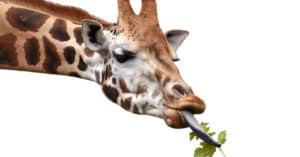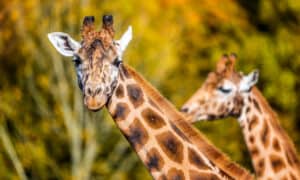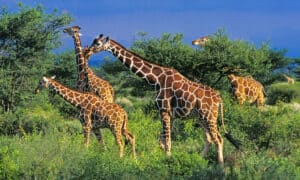Long before the existence of humans, millions of years ago, the world was full of animals that were bigger than anything we could ever imagine, like dinosaurs. One fascinating fact about all the animals that have existed until this point is their size difference. Currently, the tallest terrestrial animal is the giraffe. The giraffe is a large African hoofed mammal belonging to the genus Giraffa, primarily found grazing in parts of sub-Saharan Africa. Giraffes are easily recognized by their long necks, legs, and tails.
These long-necked animals are strict herbivores that have evolved to be the height that they are, having less competition for food on the higher branches of the canopy. Have you ever wondered how their rigorous diet impacts their poop or whether it is safe to be around their droppings? This article gives answers.
What Does Giraffe Poop Look Like?
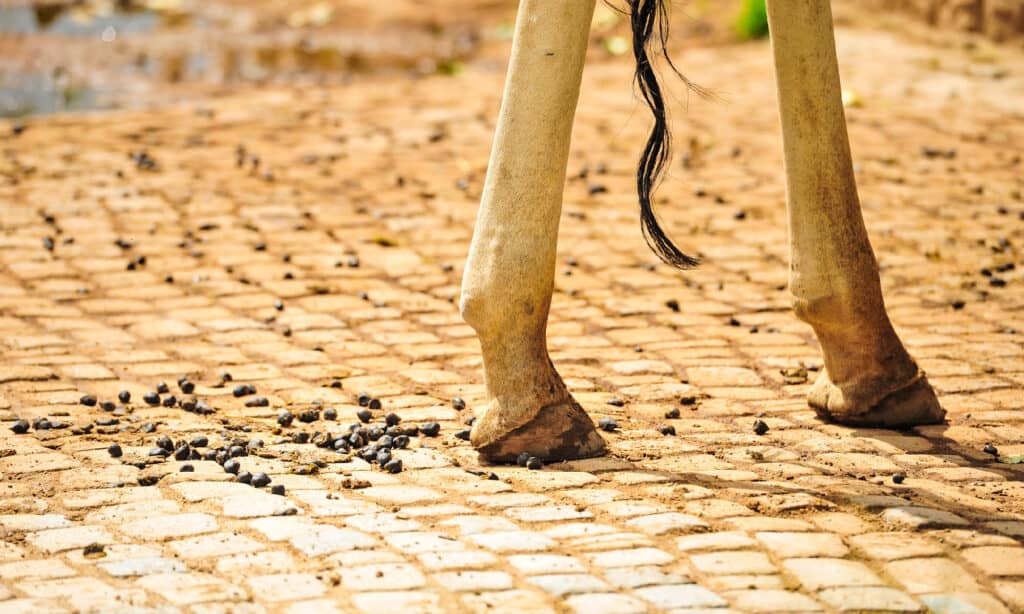
Giraffes can poop up to 33 pounds a day.
©iStock.com/peplow
Giraffes do not naturally spend a lot of time around humans, so, understandably, it might be difficult for many people to identify giraffe poop when they see it. One would think that because of their size, giraffes’ poop would be very big, but the opposite is the case. If you see a giraffe poop for the first time, you might think it came from the body of a smaller animal like a rabbit because of how small it is.
Giraffes are ruminants, just like sheep, goats, deer, and a few other species of mammals. Because their bodies do not manufacture the enzymes necessary to break down cellulose, they are unable to directly digest grasses, foliage, and other types of plant material. Most ruminants have a four-chambered stomach, and giraffes are no exception. When they eat, digestion occurs sequentially in their multi-chambered stomach. The first chamber, the rumen, is where ingested plant matter is kept and softens. The food, now cud, is regurgitated to further break down its cellulose component. After this, it is further broken down by microbes in the other parts of the stomach- the reticulum, omasum, and abomasum.
In essence, giraffes obtain all the nutrients from their meal, just like other ruminants. Therefore, the reason their droppings are so little is that they are only pure waste. To make up for the small size of their poop, giraffes poop a lot and can poop up to 15 kilograms (33 pounds) a day.
What Do Giraffes Eat?

Giraffes eat a lot of flowers, leaves, fruits, and buds.
©iStock.com/Simplyphotos
As mentioned earlier, giraffes are strict herbivores, and their height is an added advantage in helping them reach plants that are way above the ground. Giraffes are known to consume up to 60 different plant species. They accomplish this by grasping onto branches with their long, black tongues, which can reach a length of 18 inches, and stripping the leaves off the branches with their flattened, grooved teeth and tough, prehensile lips. Giraffes are naturally protected from their thorny food by their thick, sticky saliva, which shields them from any thorns they might accidentally swallow.
All giraffes have a personal favorite plant, acacia leaves. Although research shows acacia leaves are a staple in their diet, they also eat a lot of other flowers, fruits like wild apricots, and buds. They also eat seeds and fresh grass just after the rains. Giraffes will also eat and chew on the bones of other animals to get the nutrients their body lacks – in a process called osteophagy. The bones are then chewed and sucked on until they get enough nutrients, then spit out.
Giraffes also obtain 70% of their fluid needs from their diet, necessitating little to no drinking. However, when they do come across clean water, they spread out their front legs, which are longer than their backs, to drop their heads low enough to the ground to drink. Giraffes can go up to three weeks without drinking any liquids.
Is Giraffe Poop Harmful?
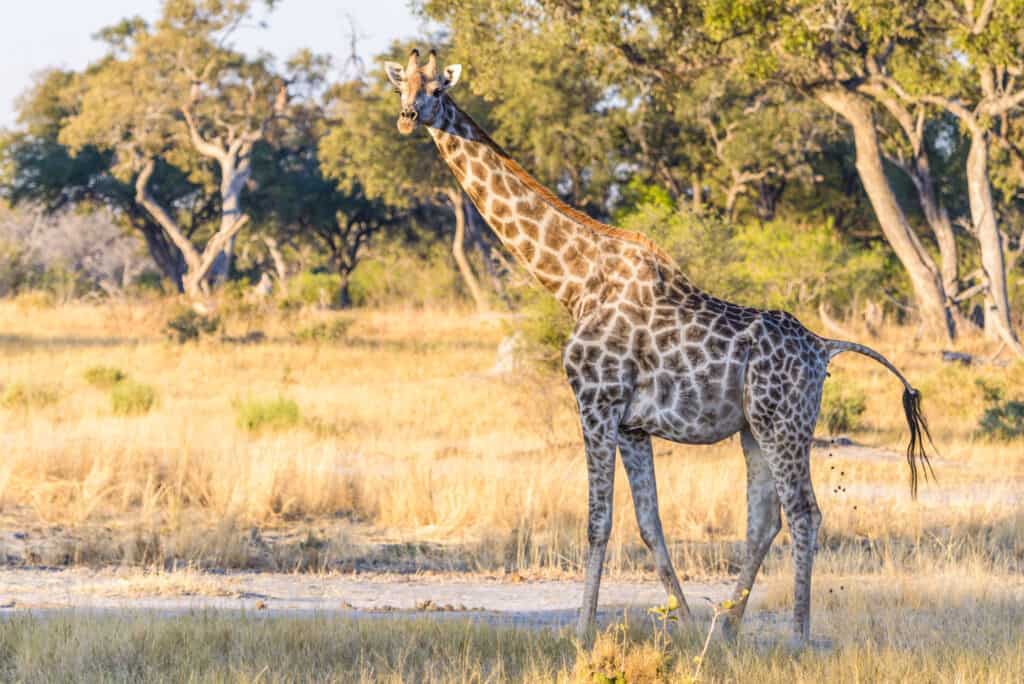
Although it is uncertain whether giraffe poop is harmful, it’s best to avoid handling it.
©nutsiam/Shutterstock.com
The majority of animal waste spreads germs and viruses that contaminate food supplies and cause allergic reactions. Poorly handled animal feces can expose humans to infections, especially in areas where animals coexist with people. Acute gastrointestinal symptoms that might result from contact with animal feces are linked to several diseases of zoonotic origin.
Also, constant contact with animals and their waste may raise the chance of contracting trachoma, an infection caused by the Chlamydia trachomatis bacteria. It is best to avoid consumption or close contact even though it is still uncertain whether giraffe poop has any negative effects on people.
Up Next:
Giraffe Teeth: Everything You Need to Know
What Do Giraffes Eat? Their Diet Explained
The photo featured at the top of this post is © iStock.com/miroslav_1
Sources
- Oakland Zoo / Accessed September 20, 2022
- Christine Elder / Accessed September 20, 2022
Thank you for reading! Have some feedback for us? Contact the AZ Animals editorial team.




